Julie Moore takes a look at how the pecking order is established

If you’ve spent time observing your flock, you’ve probably realised that chickens care little for democracy, having no interest whatsoever in ensuring each member has equal access to food and water or a good spot to roost. But yet, a flock, for the most part, lives in harmony. So how do chickens maintain social order?
A flock’s hierarchy is known as the pecking order, a term coined by Norwegian zoologist Thorleif Schjelderup-Ebbe. In 1904, the 10-year-old Schjelderup-Ebbe was put in charge of the family’s flock of chickens in Oslo. Having a fascination for the birds, he watched their behaviours, recording his observations in a daily journal. Through years of recorded data, he realised that there was a hierarchy within the flock.
He observed that chickens rank themselves in predictable ways. He discovered that rankings emerged from squabbles over food and ascertained that each member of the flock understood who ranked above and below it. He found that dominant chickens reminded their subordinates of their relative social status with a painful peck, hence the term ‘pecking order’.
He observed that the most dominant hen received certain privileges, for example, first access to food and water, the first choice of nesting boxes, roosting spot and dustbath. If another bird tried to impinge on these rites, she would quickly peck the offender into submission. Dominance wasn’t related to size: old, savvy hens were able to dominate larger, naïve birds. The second-ranking hen was able to peck any subordinate but dared not assert herself against the dominant hen. And so it continued, with each hen pecking those ranked below her and in turn was pecked by those above her.
This story is from the July 2018 edition of Your Chickens.
Start your 7-day Magzter GOLD free trial to access thousands of curated premium stories, and 8,500+ magazines and newspapers.
Already a subscriber ? Sign In
This story is from the July 2018 edition of Your Chickens.
Start your 7-day Magzter GOLD free trial to access thousands of curated premium stories, and 8,500+ magazines and newspapers.
Already a subscriber? Sign In
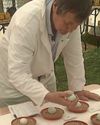
The Egg Man's got it cracked
David Herbert, nicknamed The Egg Man, tells you all you need to know about showing eggs
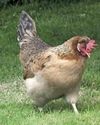
Slasher Battles On
Slasher the ancient Araucana is looking good, but looks can be deceptive
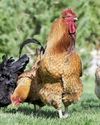
Flock Dynamics: A Guide To Social Hierarchy
Julie Moore takes a look at how the pecking order is established

In Harmony With Nature
Susie Kearley talks to Anya Lautenbach whose home shows her love of gardening and chickens
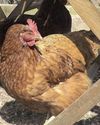
Then There Were None...
The Mystery of the Phantom Egg Eater

Off To Market
The French love buying chickens at local markets.
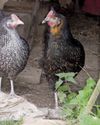
Early Learning
How chickens adapt, despite lessons from early llife
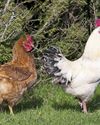
Poultry Providers
Kim Stoddart explains the benefits of buying in stock from one of the bigger, national suppliers…
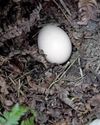
Drop In Egg Production
Drop In Egg Production
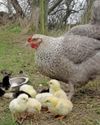
Ideal Broody Time
Ideal Broody Time